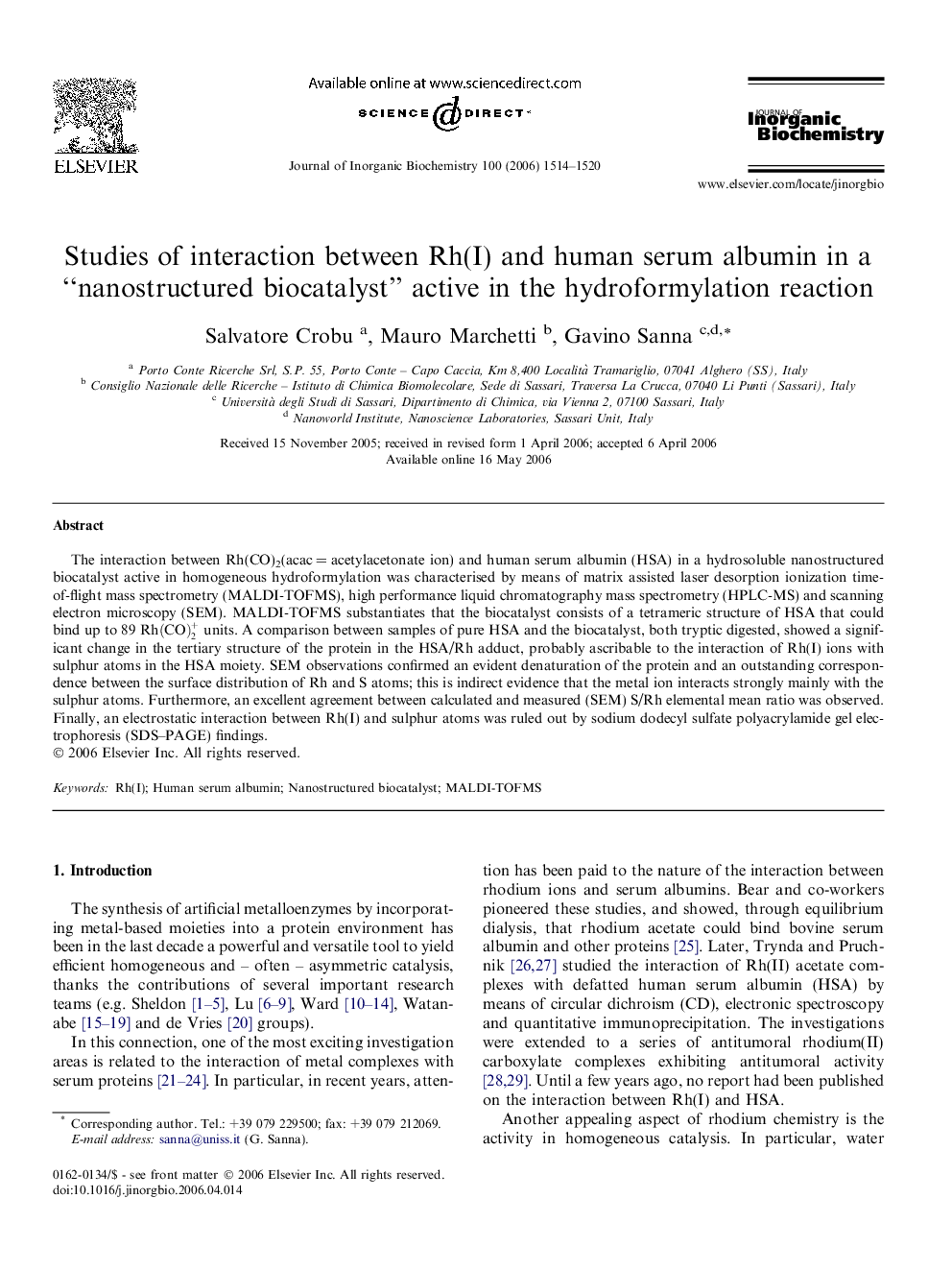| Article ID | Journal | Published Year | Pages | File Type |
|---|---|---|---|---|
| 1316800 | Journal of Inorganic Biochemistry | 2006 | 7 Pages |
The interaction between Rh(CO)2(acac = acetylacetonate ion) and human serum albumin (HSA) in a hydrosoluble nanostructured biocatalyst active in homogeneous hydroformylation was characterised by means of matrix assisted laser desorption ionization time-of-flight mass spectrometry (MALDI-TOFMS), high performance liquid chromatography mass spectrometry (HPLC-MS) and scanning electron microscopy (SEM). MALDI-TOFMS substantiates that the biocatalyst consists of a tetrameric structure of HSA that could bind up to 89 Rh(CO)2+ units. A comparison between samples of pure HSA and the biocatalyst, both tryptic digested, showed a significant change in the tertiary structure of the protein in the HSA/Rh adduct, probably ascribable to the interaction of Rh(I) ions with sulphur atoms in the HSA moiety. SEM observations confirmed an evident denaturation of the protein and an outstanding correspondence between the surface distribution of Rh and S atoms; this is indirect evidence that the metal ion interacts strongly mainly with the sulphur atoms. Furthermore, an excellent agreement between calculated and measured (SEM) S/Rh elemental mean ratio was observed. Finally, an electrostatic interaction between Rh(I) and sulphur atoms was ruled out by sodium dodecyl sulfate polyacrylamide gel electrophoresis (SDS–PAGE) findings.
